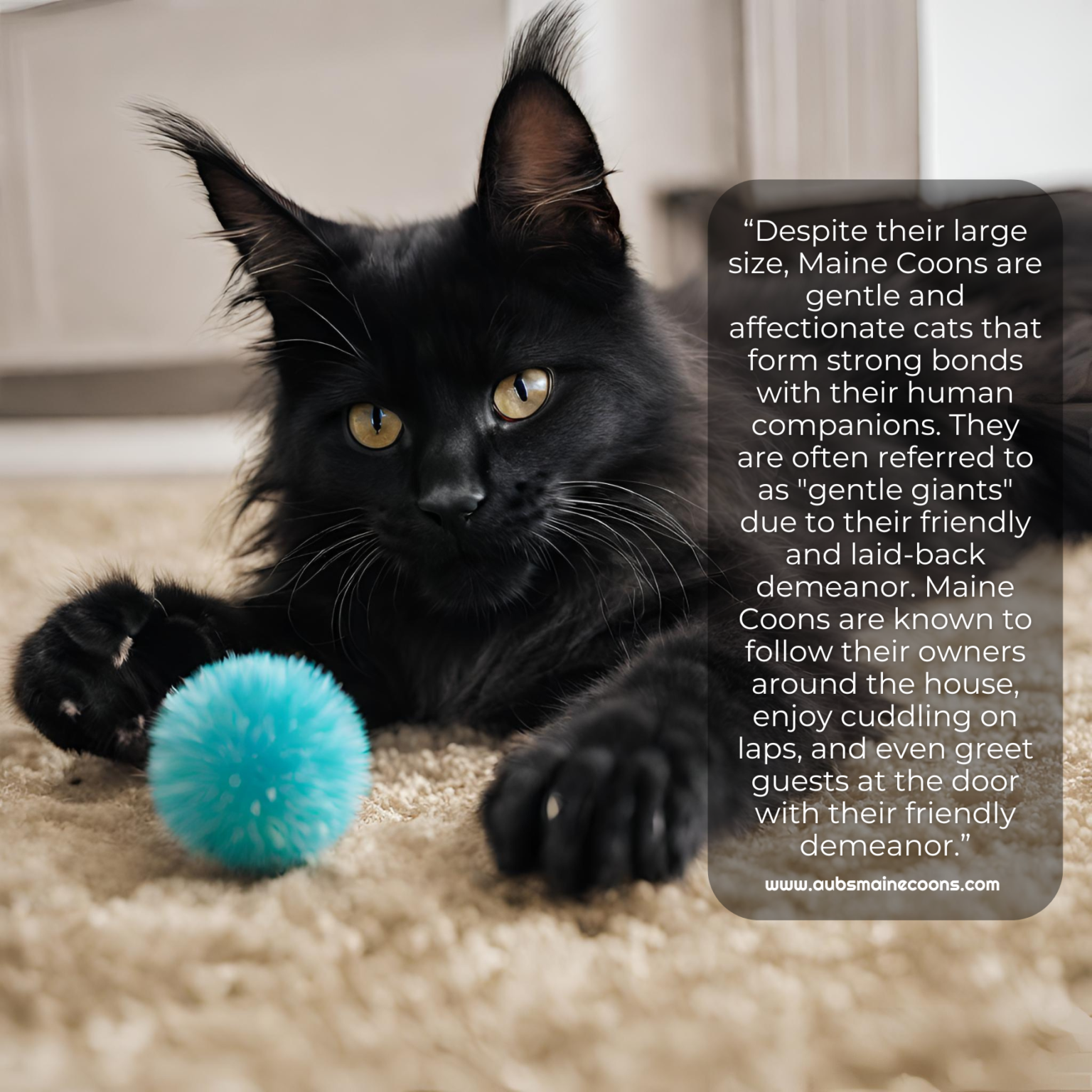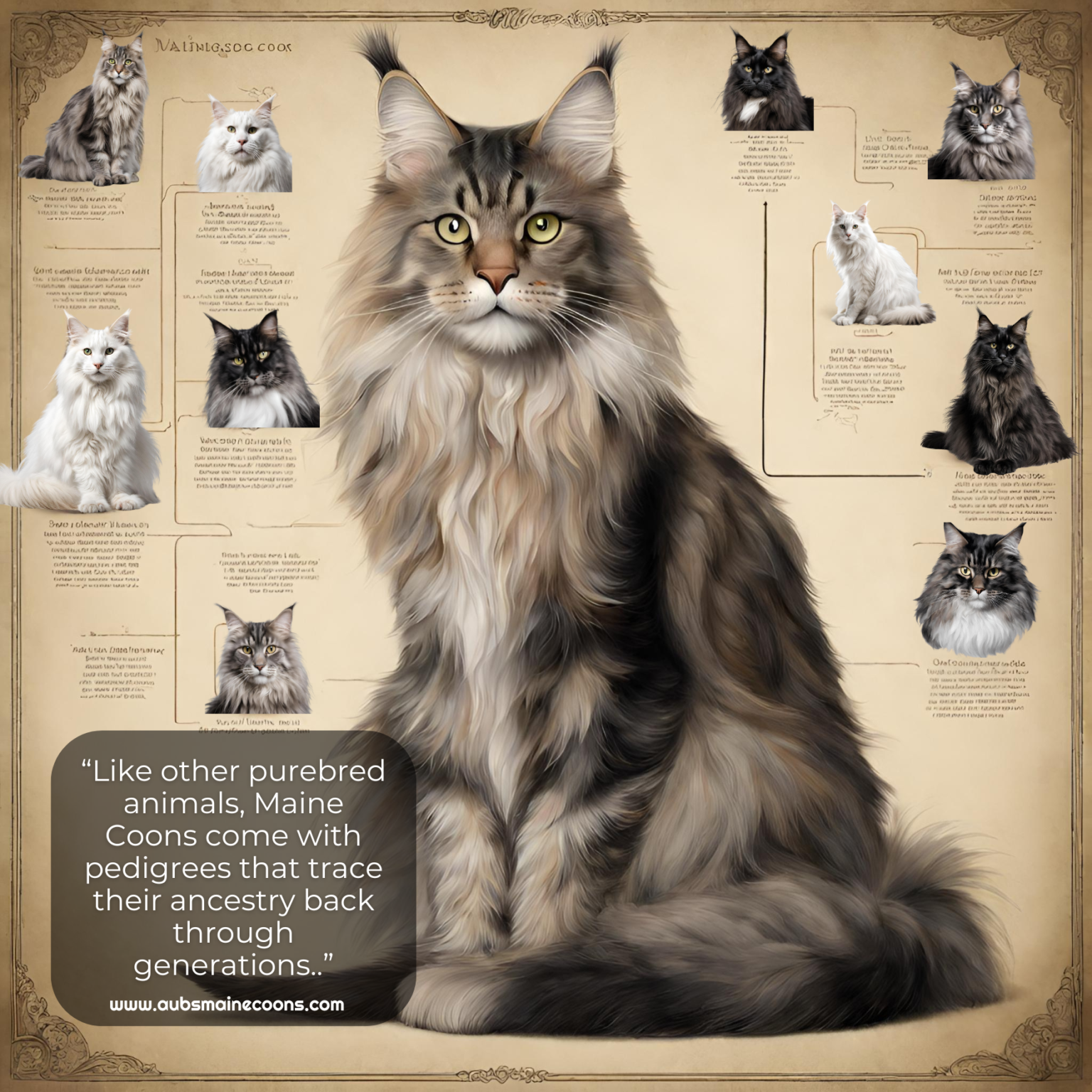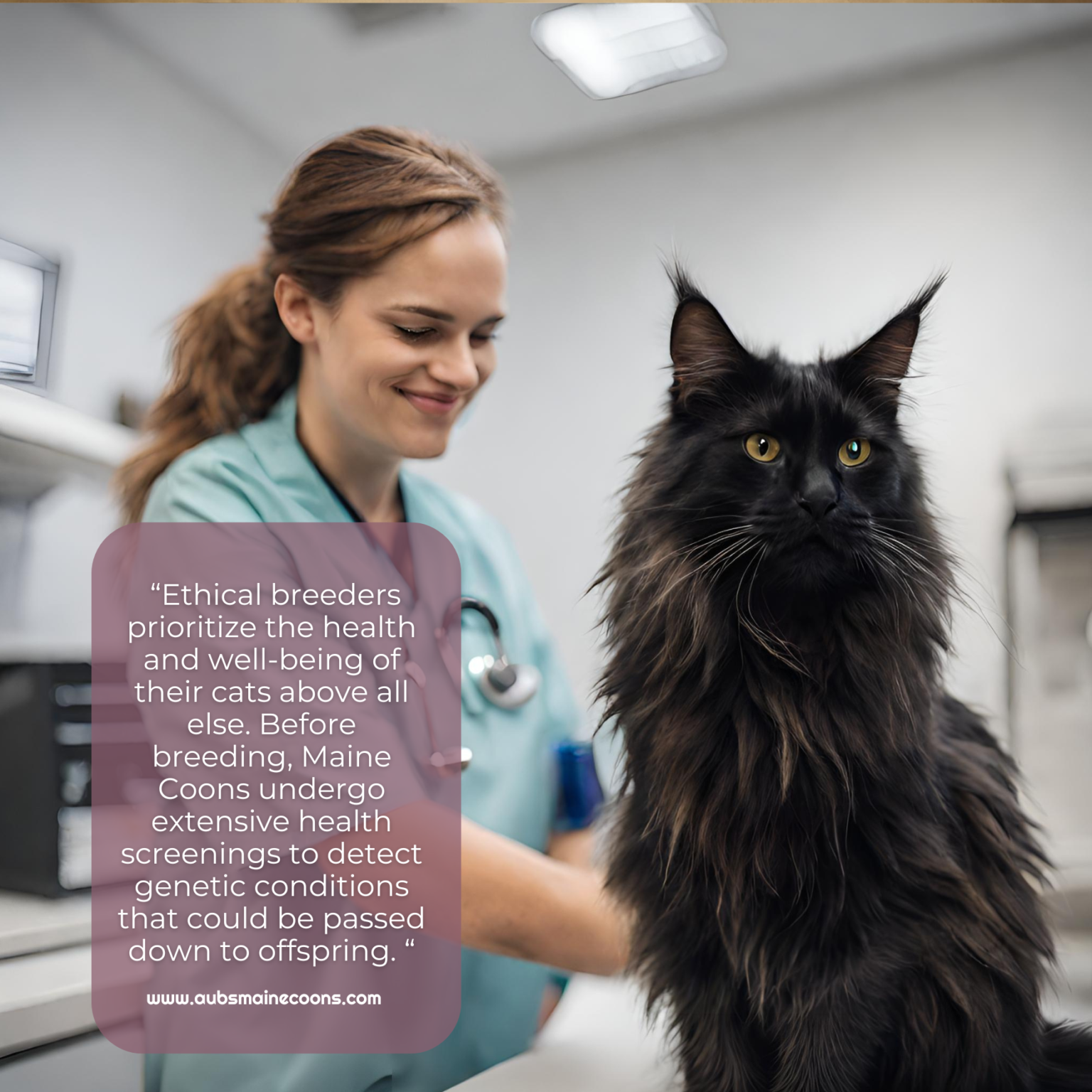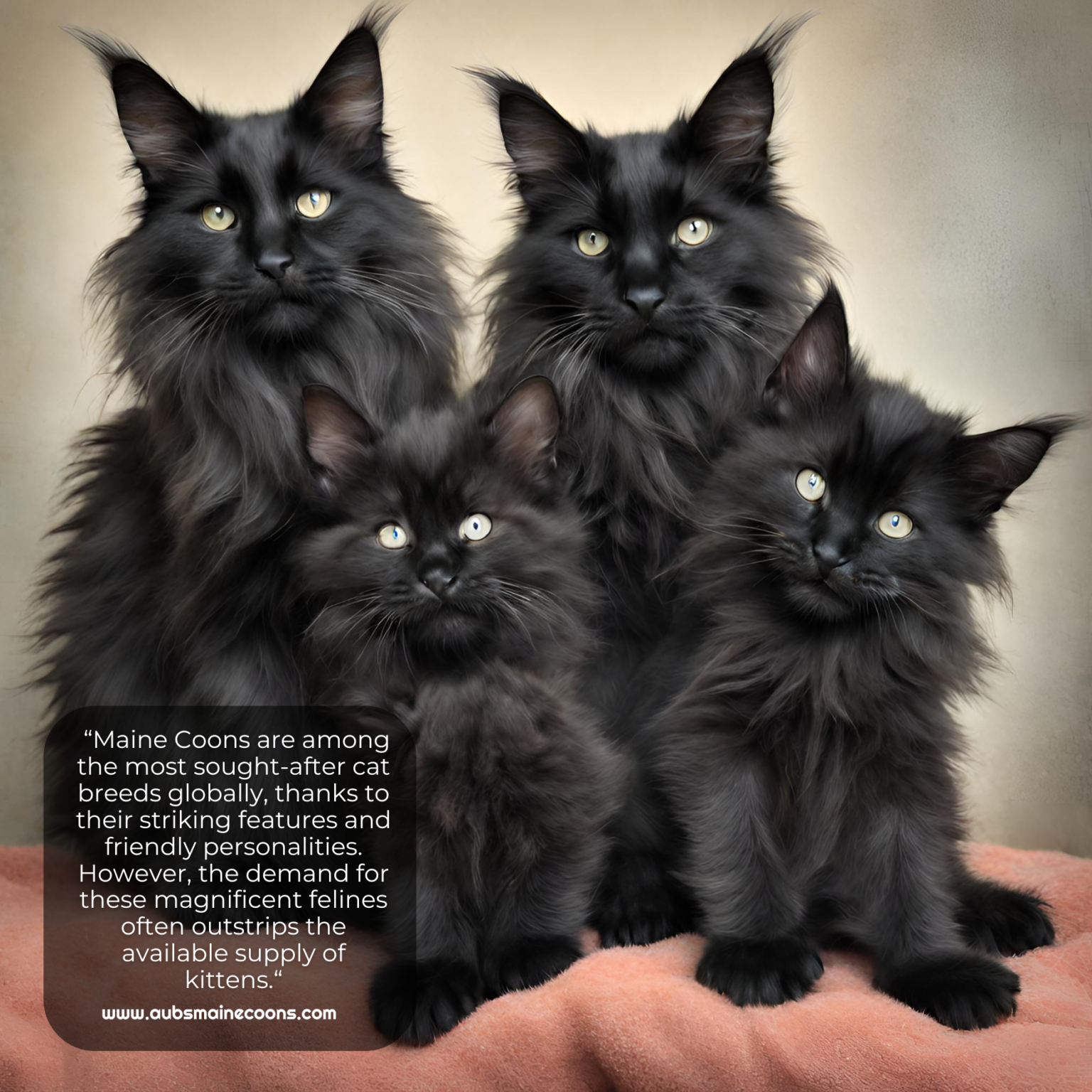The Regal Maine Coon: Why These Feline Royalties Command a Premium Price

In the world of feline fanciers, few breeds command as much awe and admiration as the majestic Maine Coon. Known for their impressive size, luxurious fur, and friendly demeanor, Maine Coons have rightfully earned their place as one of the most sought-after breeds in the cat kingdom. However, with such prestige often comes a hefty price tag. But why exactly are Maine Coons so expensive?

Exquisite Breed Characteristics
-
Impressive Size: Maine Coons are known as the gentle giants of the cat world. They are one of the largest domesticated cat breeds, with males typically weighing between 13 to 18 pounds and females between 8 to 12 pounds. It’s not uncommon for some exceptionally large Maine Coons to tip the scales at over 20 pounds!
-
Fluffy Coat: One of the most striking features of Maine Coons is their luxurious, long, and water-repellent fur. Their thick, double-layered coats help them withstand harsh winters in their native Maine, where they were originally bred as working cats on farms. Their fur requires regular grooming to prevent matting, but many owners find the grooming process to be a bonding experience with their furry companions.
-
Tufted Ears and Lynx-like Features: Maine Coons have distinctive tufts of fur on the tips of their ears, giving them an appearance reminiscent of a lynx. Their large, expressive eyes are typically gold, green, or copper in color and are set at a slightly oblique angle, adding to their wild and captivating look.
-
Intelligent and Playful Nature: Maine Coons are not only prized for their physical beauty but also for their intelligence and playful personalities. They are known to be highly trainable and can learn tricks such as fetching toys or walking on a leash. Their playful antics and sociable nature make them excellent companions for families, including children and other pets.
-
Affectionate and Loyal: Despite their large size, Maine Coons are gentle and affectionate cats that form strong bonds with their human companions. They are often referred to as “gentle giants” due to their friendly and laid-back demeanor. Maine Coons are known to follow their owners around the house, enjoy cuddling on laps, and even greet guests at the door with their friendly demeanor.
-
Excellent Hunters: Historically, Maine Coons were prized for their hunting abilities, helping to keep rodent populations in check on farms and ships. Even today, they retain strong hunting instincts and are skilled hunters. However, their friendly nature means they are just as likely to cuddle with a mouse as they are to catch it!

Pedigree and Lineage
When bringing a pedigree cat into your home, understanding their lineage is key to appreciating their unique characteristics and genetic background. Pedigree charts, also known as pedigrees or pedigree certificates, provide a visual representation of a cat’s ancestry, revealing valuable information about their breeding history. Let’s delve into the significance of pedigree charts and how to interpret them.
What is a Pedigree Chart?
A pedigree chart is a document that outlines the lineage of a pedigree cat, typically tracing back several generations. It serves as a genealogical record, documenting the cat’s ancestors, including their names, registration numbers, coat colors, and other relevant information. Pedigree charts are crucial for breeders to track breeding lines and genetic traits and for prospective owners to understand the cat’s heritage.
Key Components of a Pedigree Chart:
-
Cat’s Name and Registration Number: The pedigree chart usually starts with the cat’s name and registration number. This information identifies the cat within the breeding registry and provides a reference point for tracing its ancestry.
-
Ancestral Information: The chart displays the cat’s ancestors, typically organized in a hierarchical fashion, with each generation listed horizontally. Ancestor names are accompanied by their registration numbers, which allow for verification and cross-referencing with breeding records.
-
Coat Color and Genetic Information: Pedigree charts often include information about the coat colors and patterns of the cat and its ancestors. This information helps breeders predict the likelihood of certain traits being passed down to future generations.
-
Titles and Achievements: Some pedigree charts may include titles and achievements earned by the cat or its ancestors in cat shows or competitions. This information highlights the breed’s conformance to breed standards and demonstrates breeding excellence.
Interpreting a Pedigree Chart:
Understanding a pedigree chart requires some knowledge of breeding terminology and genetic inheritance patterns. Here are some key points to consider when interpreting a pedigree chart:
-
Inbreeding and Linebreeding: Pedigree charts can reveal instances of inbreeding or linebreeding, where closely related cats are bred together to reinforce desirable traits. While controlled inbreeding can help fix desirable traits, excessive inbreeding may increase the risk of genetic disorders.
-
Health and Genetic Testing: Responsible breeders often conduct health and genetic testing on breeding cats to minimize the risk of hereditary diseases. Pedigree charts may include information about health screenings and test results, providing insight into the cat’s genetic health.
-
Breed Standards: Pedigree charts help breeders adhere to breed standards established by cat registries. By tracing the lineage of pedigree cats, breeders can select breeding pairs that conform to these standards and preserve the breed’s characteristics.
Pedigree charts are invaluable tools for understanding the lineage and genetic background of pedigree cats. Whether you’re a breeder striving to produce healthy and well-conformed kittens or a prospective owner seeking a cat with a distinguished heritage, pedigree charts offer valuable insights into a cat’s ancestry and breeding history. By deciphering these charts, you can gain a deeper appreciation for the pedigree cat’s lineage and the dedication of responsible breeders in preserving breed standards and promoting feline welfare.

Health Testing and Care
When it comes to bringing a Maine Coon pedigree cat into your family, ensuring their health and well-being is paramount. Responsible breeders go to great lengths to maintain the health and integrity of their lineages through rigorous health testing protocols. Let’s delve into the essential health tests that reputable Maine Coon breeders perform to produce healthy and happy kittens.
-
Genetic Testing and Screening for Hereditary Diseases: Maine Coons can inherit certain genetic diseases that may affect their health. Responsible breeders conduct genetic testing to identify carriers of hereditary conditions such as polycystic kidney disease (PKD) and spinal muscular atrophy (SMA). By testing breeding cats for these genetic mutations, breeders can make informed breeding decisions to reduce the prevalence of these diseases within their breeding program.
-
Hip Dysplasia Screening: Maine Coons, like many large breeds, are susceptible to hip dysplasia, a condition where the hip joint doesn’t develop properly. Breeders often conduct hip evaluations using X-rays to assess the hip joint’s structure and detect any abnormalities. This helps prevent the transmission of hip dysplasia to future generations and ensures that breeding cats have sound hips.
-
Heart Health Evaluation: Hypertrophic cardiomyopathy (HCM) is the most common heart disease in cats, including Maine Coons. HCM causes the heart muscle to thicken, leading to potentially life-threatening complications. To screen for HCM, breeders may perform echocardiograms or cardiac ultrasounds on their breeding cats to detect any signs of heart abnormalities. Regular heart health evaluations help breeders make informed decisions to minimize the risk of passing on this genetic condition.
-
Blood Typing and Screening for Feline Infectious Diseases: Blood typing is essential, especially for breeding purposes, to prevent neonatal isoerythrolysis (NI) in kittens. Additionally, screening for feline infectious diseases such as feline leukemia virus (FeLV) and feline immunodeficiency virus (FIV) helps ensure the health of both breeding cats and their offspring.
-
Regular Veterinary Examinations and Health Checks: In addition to specific health tests, responsible breeders prioritize routine veterinary care for their cats. Regular health check-ups, vaccinations, parasite control, and dental care are essential to maintaining overall health and well-being.
-
Breeding Ethics and Practices: Beyond health testing, reputable Maine Coon breeders adhere to ethical breeding practices aimed at preserving the breed’s integrity and promoting the welfare of their cats. This includes providing adequate socialization, nutrition, and environmental enrichment for breeding cats and their kittens.
Beyond health testing and screen, there is so much more to the cost of running a cattery and all of the financial aspects involved with that. Click here to read about the financial cost of running a Maine Coon cattery, and why that factors into why pedigree cats are priced the way they are.

Limited Availability
Maine Coon cats, with their majestic appearance and gentle demeanor, captivate cat lovers around the world. However, acquiring a Maine Coon kitten is often met with challenges due to their limited availability. Let’s explore the factors contributing to the scarcity of Maine Coon kittens and what prospective owners should consider when seeking to welcome one into their homes.
1. High Demand, Limited Supply: Maine Coons are among the most sought-after cat breeds globally, thanks to their striking features and friendly personalities. However, the demand for these magnificent felines often outstrips the available supply of kittens. Responsible breeders carefully plan their breeding programs to maintain the breed’s integrity and welfare, resulting in a limited number of litters produced each year.
2. Selective Breeding Practices: Reputable Maine Coon breeders prioritize health, temperament, and adherence to breed standards in their breeding programs. This involves extensive health testing, careful selection of breeding pairs, and meticulous care for both the breeding cats and their offspring. As a result, the breeding process can be time-consuming and resource-intensive, contributing to the limited availability of Maine Coon kittens.
3. Waiting Lists and Reservation Deposits: Due to the high demand for Maine Coon kittens, many reputable breeders maintain waiting lists for prospective owners. Securing a place on a breeder’s waiting list often requires patience and may involve placing a reservation deposit to reserve a kitten from an upcoming litter. Waiting lists allow breeders to match kittens with suitable homes while ensuring that each kitten receives the love and attention it deserves.
4. Geographic Considerations: While Maine Coon breeders can be found in various regions, the availability of kittens may vary depending on location. Prospective owners may need to expand their search beyond their immediate area and be prepared to travel to acquire a Maine Coon kitten from a reputable breeder.
5. Ethical Considerations: When seeking to acquire a Maine Coon kitten, it’s crucial for prospective owners to prioritize ethical considerations. Avoid purchasing kittens from irresponsible breeders or online marketplaces that prioritize profit over the welfare of the cats. Instead, support reputable breeders who prioritize the health and well-being of their cats and adhere to responsible breeding practices.
In conclusion, the limited availability of Maine Coon kittens underscores the breed’s desirability and the dedication of responsible breeders to maintain their integrity and welfare. Prospective owners seeking to welcome a Maine Coon kitten into their homes should be prepared for a potentially lengthy waiting period and prioritize ethical considerations when selecting a breeder. While the journey to acquiring a Maine Coon kitten may require patience and persistence, the reward of sharing your life with one of these magnificent felines is undoubtedly worth the wait.

Show-Quality Standards
For those interested in showing or breeding Maine Coons, the standards are exceptionally high. Show-quality Maine Coons must meet strict criteria regarding their size, proportions, coat quality, color, and temperament. Achieving these standards requires careful breeding, grooming, and training from birth, which significantly increases the cost of acquiring a show-quality Maine Coon. Let’s delve into the intricate details of Maine Coon show standards and what sets these majestic felines apart on the show circuit.
1. Size and Proportions: Maine Coons are celebrated for their impressive size and sturdy build. Show-quality Maine Coons should exhibit a substantial body structure, with a long, rectangular shape. The body should be well-muscled and balanced, with the hindquarters slightly higher than the shoulders. Additionally, Maine Coons should possess a substantial bone structure, giving them a robust and powerful appearance.
2. Head and Facial Features: The head of a Maine Coon is one of its defining characteristics. Show-quality Maine Coons should have a broad, modified wedge-shaped head with high cheekbones and a square muzzle. The ears are large, wide at the base, and tufted at the tips, contributing to the breed’s lynx-like appearance. The eyes are large, expressive, and ideally almond-shaped, set at a slightly oblique angle.
3. Coat and Coloration: The coat of a Maine Coon is another standout feature, known for its dense, water-repellent fur and luxurious texture. Show-quality Maine Coons should have a long, flowing coat that is thick and shaggy, especially around the neck (ruff) and tail (plume). The coat should be of even length and texture, with a slight undercoat providing insulation. Maine Coons come in various colors and patterns, with all colors and patterns being acceptable for show, including tabby, solid, and tortoiseshell.
4. Tail and Appendages: The tail of a Maine Coon is a focal point of its appearance, often described as bushy and resembling a raccoon’s tail. Show-quality Maine Coons should have a long, flowing tail that is broad at the base and tapers to a rounded tip. The tail should be carried proudly and may have a slight curve or kink, adding to the breed’s distinctive charm.
5. Temperament and Behavior: In addition to physical attributes, Maine Coons are prized for their friendly and sociable personalities. Show-quality Maine Coons should exhibit confidence, intelligence, and an amiable disposition. They should be outgoing and affectionate, enjoying interaction with judges and spectators alike.
6. Overall Impression: Ultimately, show-quality Maine Coons should present a striking and harmonious overall impression that reflects the breed’s standard. Judges evaluate each cat based on how well it embodies the breed’s characteristics and adheres to the established standard.

In Conclusion:
Maine Coons may come with a premium price tag, but for many cat enthusiasts, the investment is well worth it. These regal felines offer companionship, beauty, and personality in abundance, making them cherished members of countless households around the world. While the cost of a Maine Coon may seem steep, it reflects the dedication, care, and expertise required to produce such exceptional cats. So, if you’re considering adding a Maine Coon to your family, rest assured that you’re not just purchasing a pet – you’re investing in a lifetime of love and joy.